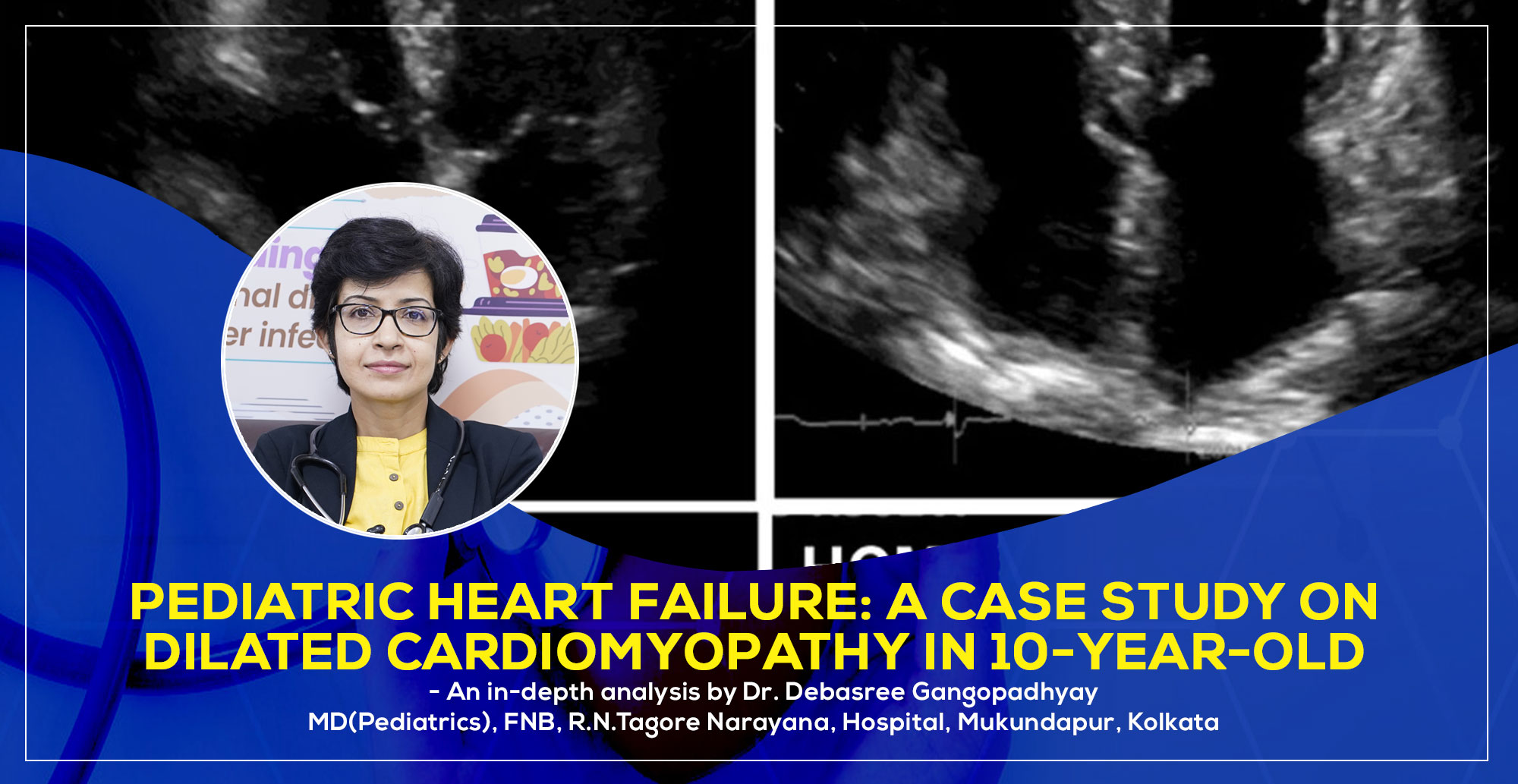Subtotal $0.00
Pediatric Heart Failure: A Case Study on Dilated Cardiomyopathy in 10-Year-Old
Introduction
Dilated cardiomyopathy (DCM), presents significant challenges in pediatric cardiology. It is a serious heart condition that occurs when the heart muscle cells are damaged or abnormal. DCM in the pediatric age group is a condition where the heart’s left ventricle becomes enlarged and weakened, reducing its ability to pump blood efficiently.
This case study highlights the journey of a 10-year-old boy diagnosed with DCM, detailing the symptoms, diagnosis, treatment, and ultimate recovery.
Initial Symptoms
The patient, a 10-year-old boy, was brought to the clinic with complaints of
- Persistent fatigue
- Shortness of breath, especially during play
- Swelling in the legs and abdomen
- Occasional chest discomfort
- Decreased appetite and weight loss
His parents reported that these symptoms had progressively worsened over a few months.
Diagnosis
The child showed symptoms of congestive heart failure at the first evaluation, such as
- Rapid heartbeat
- Enlarged liver
- Swelling in the limbs
Diagnostic Tests Conducted
- Echocardiogram: A significantly enlarged left ventricle with a decreased ejection fraction was seen, which confirmed dilated cardiomyopathy.
- Electrocardiogram (ECG): The electrocardiogram (ECG) revealed left ventricular enlargement and a fast heartbeat.
- Chest X-ray: The X-ray of the chest revealed pulmonary congestion and an enlarged heart.
- Cardiac MRI: This test further confirmed the fibrosis and myocardial thinning.
- Blood Tests:
- A higher level of B-type Natriuretic Peptide (BNP), which indicates heart failure, is one of the most important blood tests.
- Normal cardiac enzymes, ruling out myocardial infarction.
- Genetic testing was recommended to determine familial cardiomyopathy.
Line of Treatment (LOT)
The treatment was structured around stabilizing the child’s cardiac function and managing symptoms.
Immediate Management
- Oxygen Therapy:Oxygen therapy is used for relieving hypoxia.
- Diurestics: to reduce congestion and excess fluids.
- Beta-Blockers (Carvedilol): To improve heart function by reducing workload.
- ARNI- angiotensin receptor blocker and neprylin inhibitor
Long-Term Medical Management
- Medicine: Helped reduce afterload and improve cardiac output.
- Nutritional Support: A low-sodium, high-protein diet was recommended.
- Regular Cardiac Monitoring: Monthly echocardiograms were conducted to assess improvements.
Lifestyle Modifications
- Restricted vigorous physical activity.
- Strict fluid and salt intake monitoring.
- Emotional support and counselling for the patient and parents.
Success Story: A Journey to Recovery
Over the following 18 months, the child showed impressive recovery with strict medication adherence and lifestyle modifications:
- Significant improvement in symptoms with a mild increase in ejection fraction.
- Reduced symptoms, allowing the child to resume school and lightphysical activities.
- No further hospitalizations, indicating stable heart function.
Discussion
Significant Advice from This Case
- Early detection plays a crucial role in managing pediatric heart failure.
- Multidisciplinary treatment with pediatric cardiologists, nutritionists, and physiotherapists ensures a holistic approach.
- Family support is essential in ensuring adherence to long-term therapy.
Conclusion
Dilated cardiomyopathy in children requires timely diagnosis and aggressive medical treatment. Despite congenital heart disease, young patients can live nearly normal lives due to advanced treatment options in pediatric cardiology.
FAQs on Dilated cardiomyopathy
- What are the early warning signs of pediatric heart failure?
Early signs include fatigue, difficulty breathing, swelling of limbs and abdomen, and poor appetite. - How is dilated cardiomyopathy diagnosed in children?
It is diagnosed through echocardiograms, ECG, chest X-rays, and cardiac MRI. - Can a child recover completely from dilated cardiomyopathy?
While there is no complete cure, early intervention and treatment significantly improve outcomes. A small percentage of patients may recover completely depending on the cause of the cardiomyopathy. - What are the common causes of pediatric dilated cardiomyopathy?
Causes include genetic mutations, viral infections, and metabolic disorders. - Is heart transplantation necessary in all pediatric DCM cases?
No, most cases are managed medically, but severe cases may require a transplant.
Read Also: Congenital Heart Defect Repair – A Detailed Case Study

Dr. Debasree Gangopadhyay is a highly respected pediatric cardiologist based in Kolkata, India, specializing in the diagnosis and treatment of heart conditions in children. With a compassionate approach and a commitment to excellence, Dr. Gangopadhyay has made significant contributions to the field of pediatric cardiology. Her expertise includes managing congenital heart defects, arrhythmias, and other cardiovascular conditions in young patients. Dr. Gangopadhyay is dedicated to providing personalized care and staying updated with the latest advancements in pediatric cardiology. She is passionate about educating families on heart health and actively participates in research and community outreach programs.




Comments are closed